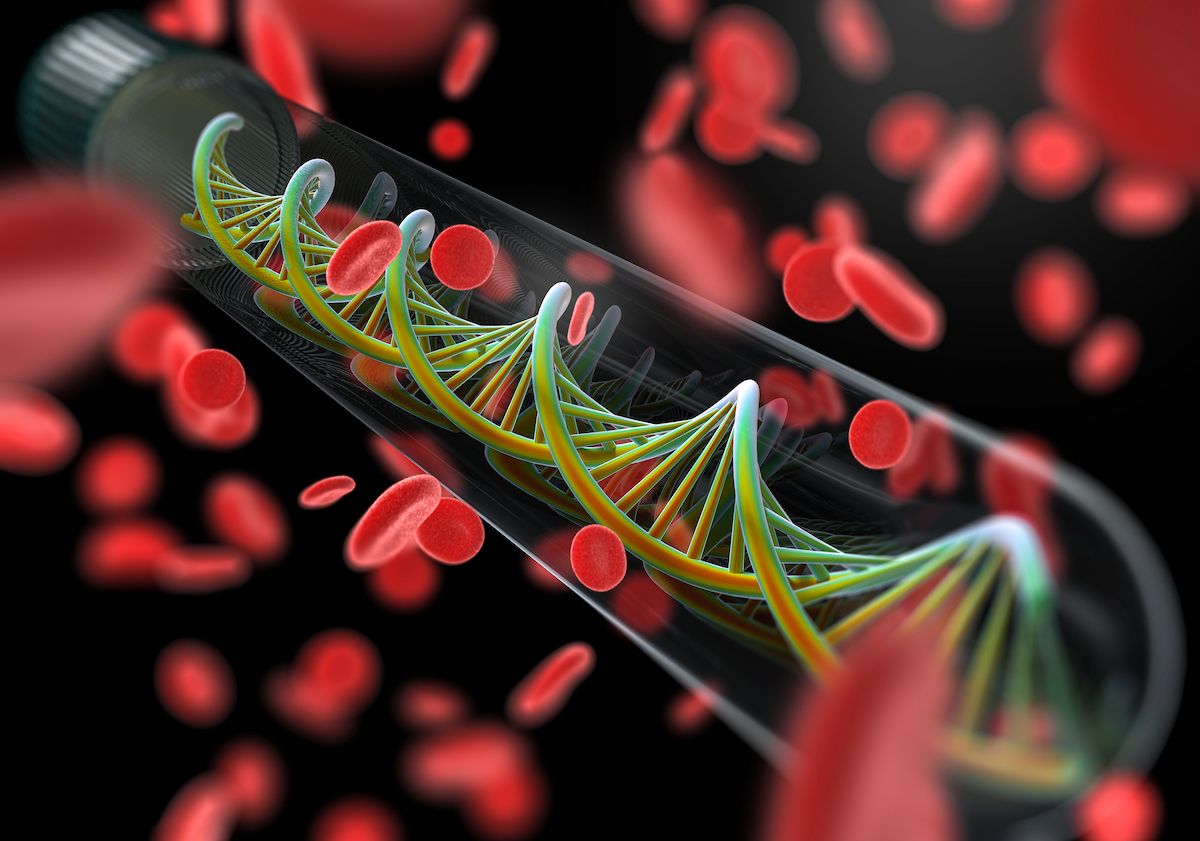Blood-Based Screening Test May Increase Preclinical Lung Cancer Detection
The blood-based test detected 31% of lung cancers 1 year prior to in-trial diagnosis compared with 8% of cancers identified by low-dose CT or Lung-RADS.
According to the American Lung Association’s 2025 State of Lung Cancer report, only 28.1% of lung cancer cases are diagnosed at an early stage, where the 5-year survival rate is 65%.

Results from the National Lung Screening Trial (NLST; NCT00047385) revealed that the Mercy Halo blood-based lung screening test displayed a significant improvement in the detection of early-stage preclinical lung cancer, especially among patients at an elevated risk who were not currently engaged in low-dose CT screening programs, according to a news release from the developer, Mercy BioAnalytics.1
Specifically, compared to an 8% detection of lung cancers within 1 year prior to diagnosis with low-dose CT or the Lung Imaging Reporting and Data System (Lung-RADS) in the American Lung Association’s 2025 State of Lung Cancer report, the blood-based test detected 31% of lung cancers 1 year before in-trial diagnoses. Additionally, this superiority was observed across all lung cancer histologies.
Moreover, the Mercy test identified 40% of cancers missed by low-dose CT when images were interpreted using Lung-RADS, which is the current standard-of-care interpretation framework. Furthermore, the blood-based assay detected 34.4% of cancers in the study, which was comparable to the sensitivity observed with low-dose CT/Lung-RADS at 39.5%. Additionally, the investigational test score showed an average score increase of 79% in detected cases in samples collected across 2 sequential rounds of annual screening.
"This study marks a significant step toward expanding lung cancer screening accessibility and effectiveness, potentially transforming early detection strategies for millions of Americans," Dawn Mattoon, PhD, chief executive officer of Mercy BioAnalytics, said in the news release.1 "We are excited to continue development of this assay as we look to build on our exceptional ovarian cancer test portfolio with the addition of lung cancer indications."
According to the American Lung Association’s 2025 State of Lung Cancer report, only 28.1% of lung cancer cases are diagnosed at an early stage, where the 5-year survival rate is 65%.2 A total of 43% of cases are diagnosed at a late stage of lung cancer, where the 5-year survival rate is 10%. Additionally, the report recommended annual screening to increase its effectiveness in identifying earlier stage cancers.
The NLST was conducted from 2002 to 2009 and included 53,454 patients randomly assigned to low-dose CT (n = 26,722) and chest radiography (26,732), respectively.3 Patients were offered 3 screenings, which included 1 at baseline (T0) and 2 subsequent annual follow-up examinations (T1 and T2). The trial sought to compare the effectiveness of low-dose CT scans vs chest x-ray scans in screening patients at a high risk for lung cancer.
The primary end point of the study was lung cancer mortality. Secondary end points included all-cause deaths; lung cancer diagnoses; diagnostic evaluation complications after a positive screening test; and T0, T1, and T2 screening results.
According to a study conducted by the developers and presented at the American Thoracic Society, a systematic overestimation of low-dose CT sensitivity and follow-up application of the Lung-RADS framework was reported in the original reports of the NLST.4 Specifically, they had found that the low-dose CT sensitivity decreased as the diagnostic window length increased, with an initial baseline screen point sensitivities of 86.3%, 73.3%, 70.2%, and 58.3% at 12, 18, 24, and 36 months, respectively, vs 78.8%, 64.5%, 58.9%, and 49.0% at each point with cumulative incidence screen sensitivity. Furthermore, they found that most cancers diagnosed at T1 or T2 low-dose CT scans had negative scans in prior years, with T1 cancers showing a 55% negativity with T0 scan results and T2 cancers showing 64% and 69% negativity rates at T1 and T0 scans, respectively.
References
- Mercy Halo blood test shows promise in early lung cancer detection: new study shows performance similar to LDCT with clinical complementarity. News release. November 20, 2025. Accessed November 20, 2025. https://tinyurl.com/44p2y6x9
- American Lung Association. State of lung cancer: 2025 report. Accessed November 20, 2025. https://tinyurl.com/2up25r3j
- National Lung Screening Trial (NLST) screening (NLST). ClinicalTrials.gov. Updated May 20, 2014. Accessed November 20, 2025. https://tinyurl.com/ymk9uytf
- Mattoon DR, Hawkins TB, Smith M, Berg CD, Skates SJ, Ransohoff DF. Low-dose CT screening sensitivity in the National Lung Screening Trial varies with diagnostic window length. Am J Respir Cit Care Med. 2025;211:A4808. doi:10.1164/ajrccm.2025.211.Abstracts.A4808